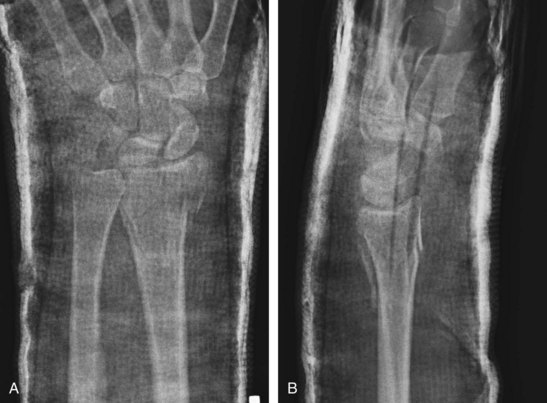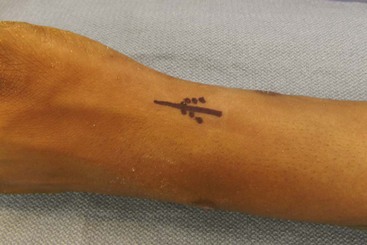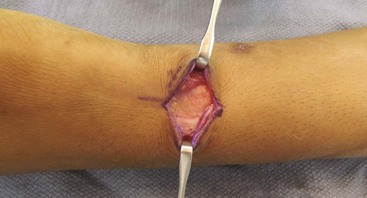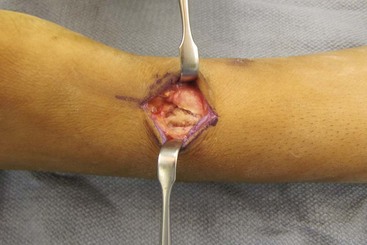Procedure 76 Percutaneous Pinning of Distal Radius Fractures
![]() See Video 57: Percutaneous Pinning of Distal Radius Fractures
See Video 57: Percutaneous Pinning of Distal Radius Fractures
Examination/Imaging
Imaging
 Anteroposterior and lateral images of the wrist should be obtained. These will demonstrate the specific fracture pattern of the injury. (Fig. 76-1A and B shows a 47-year-old woman who sustained an intra-articular distal radius fracture with some angulation and displacement.)
Anteroposterior and lateral images of the wrist should be obtained. These will demonstrate the specific fracture pattern of the injury. (Fig. 76-1A and B shows a 47-year-old woman who sustained an intra-articular distal radius fracture with some angulation and displacement.)
 If there is significant intra-articular comminution, a computed tomography scan will provide more information on the location and displacement of the fracture fragments.
If there is significant intra-articular comminution, a computed tomography scan will provide more information on the location and displacement of the fracture fragments.
Exposures
 The radial-sided pins are placed first. A 2-cm incision is made over the radial styloid (Fig. 76-2).
The radial-sided pins are placed first. A 2-cm incision is made over the radial styloid (Fig. 76-2).
 The soft tissue flaps are elevated, and the skin is retracted. Branches of the superficial nerve are identified and carefully protected (Fig. 76-3).
The soft tissue flaps are elevated, and the skin is retracted. Branches of the superficial nerve are identified and carefully protected (Fig. 76-3).
 The tip of the radial styloid is identified, and the periosteum is elevated. The tendons of the first and second dorsal compartments are reflected off the radius enough to safely insert two pins. The tendons are left within the compartments and are elevated subperiosteally (Fig. 76-4).
The tip of the radial styloid is identified, and the periosteum is elevated. The tendons of the first and second dorsal compartments are reflected off the radius enough to safely insert two pins. The tendons are left within the compartments and are elevated subperiosteally (Fig. 76-4).



















